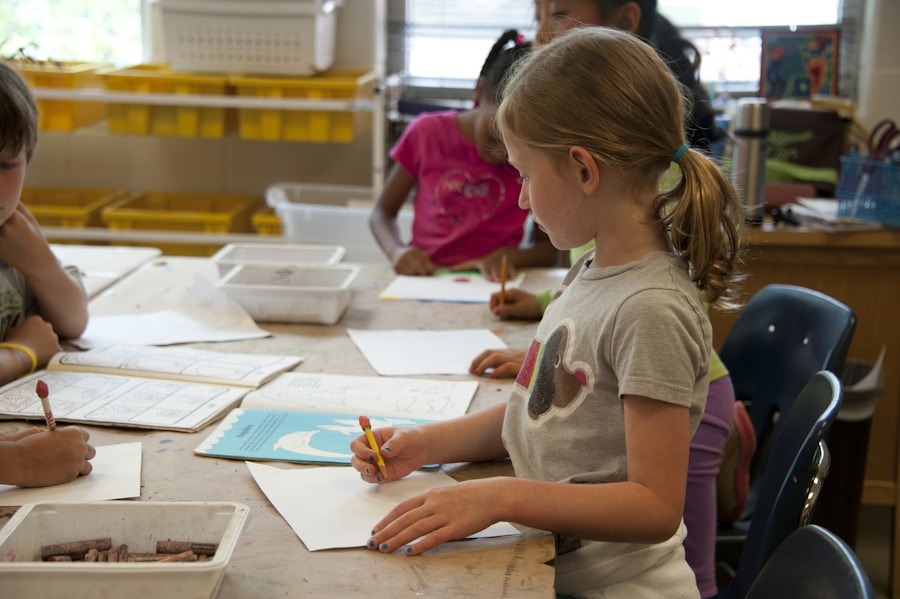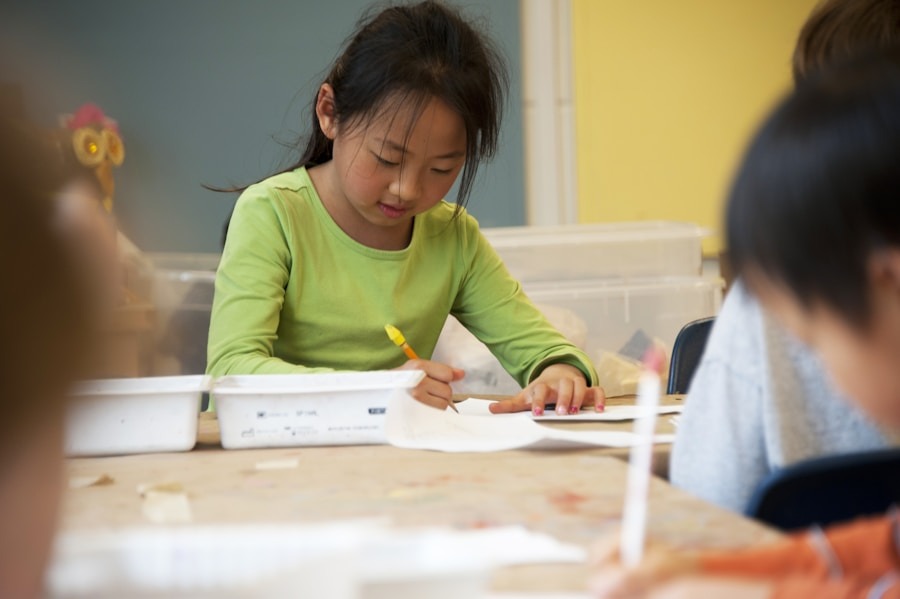A child-centered curriculum is an educational approach that prioritizes the interests, needs, and developmental stages of children. This philosophy shifts the focus from traditional teacher-led instruction to a more dynamic, interactive learning environment where students are active participants in their education. The essence of a child-centered curriculum lies in recognizing that each child is unique, with distinct learning styles, preferences, and paces.
By tailoring educational experiences to these individual characteristics, educators can foster a more engaging and effective learning atmosphere. In practice, a child-centered curriculum often incorporates hands-on activities, collaborative projects, and opportunities for self-directed learning. For instance, rather than simply lecturing on a topic, teachers might facilitate group discussions or projects that allow students to explore concepts in depth.
This approach not only enhances understanding but also cultivates critical thinking and problem-solving skills. Moreover, by allowing children to take ownership of their learning, educators can instill a sense of responsibility and motivation that is crucial for lifelong learning.
Key Takeaways
- Child-centered curriculum focuses on the interests, needs, and abilities of the child, allowing them to take an active role in their learning process.
- Skill-based curriculum emphasizes the development of specific skills such as critical thinking, communication, and collaboration, preparing students for real-world challenges.
- Problem-centered curriculum offers benefits such as fostering creativity, promoting teamwork, and developing problem-solving abilities in students.
- Implementing child-centered curriculum in the classroom involves creating a supportive and inclusive learning environment that encourages student autonomy and exploration.
- Developing skills through skill-based curriculum involves providing opportunities for students to practice and apply their skills in various contexts, leading to mastery and confidence.
Exploring Skill-Based Curriculum
Academic and Beyond
A skill-based curriculum encompasses not only academic skills but also social, emotional, and practical skills that are essential for personal and professional success. This includes modules on communication skills, teamwork, and critical thinking, which are vital for navigating complex social and professional landscapes.
Real-World Applications
In a classroom setting, a skill-based curriculum can manifest as group projects where students must collaborate to solve a problem or present their findings. Such activities enhance academic learning and prepare students for future challenges by equipping them with the tools they need to succeed.
Inclusive Learning Environment
By focusing on skill development, educators can create a more inclusive environment that recognizes diverse talents and strengths among students. This approach values the unique abilities of each student, promoting a more equitable and effective learning environment.
The Benefits of Problem-Centered Curriculum

A problem-centered curriculum is designed around real-world issues and challenges that students can relate to and engage with meaningfully. This approach encourages learners to think critically and creatively as they work to find solutions to complex problems. By situating learning within the context of real-life situations, educators can make lessons more relevant and impactful.
Students are not merely passive recipients of information; instead, they become active problem solvers who learn to apply their knowledge in practical ways. One significant benefit of a problem-centered curriculum is its ability to foster collaboration among students. When faced with a common challenge, learners often work together to brainstorm solutions, share ideas, and support one another in the learning process.
This collaborative environment not only enhances social skills but also promotes a sense of community within the classroom. Additionally, by tackling real-world problems, students develop a deeper understanding of the subject matter and its implications beyond the classroom walls. For instance, a project focused on environmental sustainability might inspire students to explore scientific concepts while also considering ethical implications and community impact.
Implementing Child-Centered Curriculum in the Classroom
Implementing a child-centered curriculum requires thoughtful planning and a willingness to adapt traditional teaching methods. Educators must first assess the interests and needs of their students to create a curriculum that resonates with them. This might involve conducting surveys or informal discussions to gauge what topics excite students or what challenges they face in their learning journey.
Once this information is gathered, teachers can design lessons that incorporate these interests while aligning with educational standards. In practice, creating a child-centered classroom involves incorporating various teaching strategies that promote active engagement. For example, project-based learning can be an effective way to immerse students in hands-on experiences that relate to their interests.
Teachers might set up learning stations where students can explore different aspects of a topic at their own pace or encourage them to pursue independent research projects on subjects they are passionate about. Additionally, fostering an environment where students feel safe to express their thoughts and ideas is crucial; this can be achieved through open dialogue and encouraging questions. By prioritizing student agency and choice, educators can create a vibrant learning atmosphere that nurtures curiosity and enthusiasm.
Developing Skills Through Skill-Based Curriculum
The development of skills through a skill-based curriculum is multifaceted and can significantly enhance students’ overall educational experience. This approach not only focuses on academic skills but also emphasizes the importance of soft skills such as communication, teamwork, and adaptability. By integrating these competencies into the curriculum, educators prepare students for the complexities of modern life and the workforce.
For instance, incorporating technology into lessons can help students develop digital literacy skills essential for navigating today’s tech-driven world. Moreover, skill-based curricula often employ experiential learning techniques that allow students to practice their skills in real-world contexts. For example, a class might engage in community service projects where students must collaborate with local organizations to address specific needs within their community.
Additionally, assessments in a skill-based curriculum often focus on demonstrating proficiency through practical applications rather than traditional testing methods. This shift encourages students to take risks and learn from failures as they refine their skills over time.
Solving Real-world Problems with Problem-Centered Curriculum

A problem-centered curriculum is particularly effective in equipping students with the tools they need to tackle real-world challenges. By engaging learners in projects that address pressing societal issues—such as climate change, poverty, or public health—educators can inspire critical thinking and innovation. For instance, students might work on developing sustainable solutions for their school or community, such as creating recycling programs or energy conservation initiatives.
These projects not only enhance academic learning but also empower students to become active contributors to society. Furthermore, problem-centered curricula often encourage interdisciplinary approaches that draw from various subject areas. For example, a project focused on urban development might integrate concepts from geography, economics, and environmental science.
This holistic approach allows students to see the interconnectedness of different fields and understand how diverse perspectives contribute to problem-solving.
Ultimately, this approach fosters a sense of agency among learners as they realize their potential to effect change in their communities and beyond.
If you are interested in exploring the philosophical underpinnings of education, you may find Introduction to Philosophy of Science: Nature, Explanation, Induction, and Deduction to be a fascinating read. This article delves into the nature of scientific knowledge and the methods of reasoning used in scientific inquiry. Understanding basic logical concepts is also crucial in education, as discussed in India: An Object of Knowledge. These articles provide valuable insights that can enhance child-centered, skill-based, and problem-centered curricula.
FAQs
What is a child-centered curriculum?
A child-centered curriculum is an approach to education that focuses on the needs and interests of the individual child. It emphasizes the child’s active involvement in the learning process and encourages self-directed learning.
What is a skill-based curriculum?
A skill-based curriculum is designed to help students develop specific skills, such as critical thinking, problem-solving, communication, and collaboration. It focuses on the acquisition and mastery of these skills through various learning activities and experiences.
What is a problem-centered curriculum?
A problem-centered curriculum is centered around real-world problems and issues that students are encouraged to explore, analyze, and solve. It aims to develop students’ critical thinking and problem-solving abilities by engaging them in meaningful and relevant learning experiences.






















+ There are no comments
Add yours